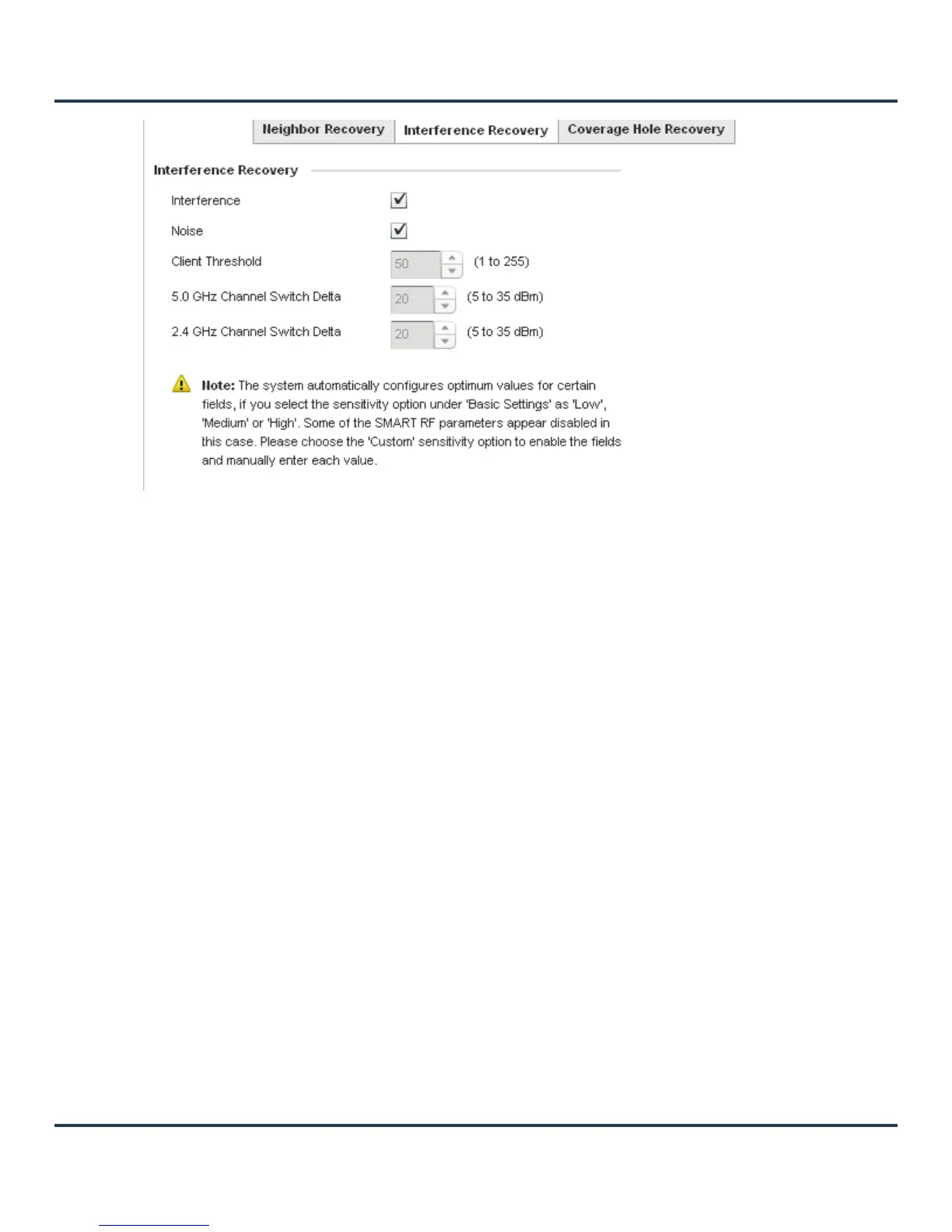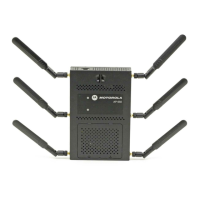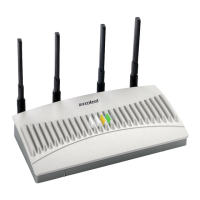Motorola Solutions AP-6511 Access Point System Reference Guide
6-62
Figure 6-28 Smart RF Advanced Configuration screen - Interference Recovery tab
16.Set the following Interference Recovery parameters:
Interference Select the radio button to allow the Smart RF policy to scan for excess
interference from supported radio devices. WLANs are susceptible to
sources of interference, such as neighboring radios, cordless phones,
microwave ovens and Bluetooth devices. When interference for WiFi
sources is detected, Smart RF supported devices can change the channel
and move to a cleaner channel. This feature is enabled by default.
Noise Select the radio button to allow the Smart RF policy to scan for excess
noise from WiFi devices. When detected, Smart RF supported devices can
change their channel and move to a cleaner channel. This feature is
enabled by default.
Client Threshold Use the spinner to set a client threshold for the Smart RF policy between
1 - 255. If threshold number of clients are connected to a radio, it does not
change its channel even though it requires one, based on the interference
recovery determination made by the smart master. The default setting is
50.
5.0 GHz Channel
Switch Delta
Use the spinner to set a channel switch delta (between 5 - 35 dBm) for the
5.0 GHz radio. This parameter is the difference between noise levels on the
current channel and a prospective channel. If the difference is below the
configured threshold, the channel will not change. The default setting is 20
dBm.
2.4 GHz Channel
Switch Delta
Use the spinner to set a channel switch delta (between 5 - 35 dBm) for the
2.4 GHz radio. This parameter is the difference between noise levels on the
current channel and a prospective channel. If the difference is below the
configured threshold, the channel will not change. The default setting is 20
dBm.

